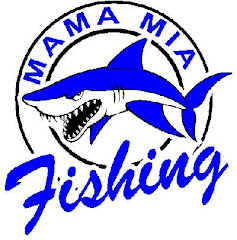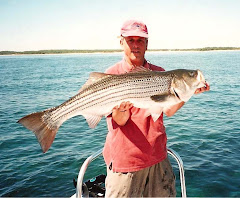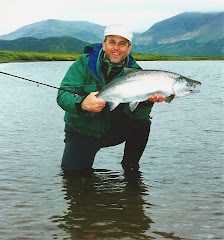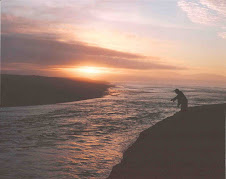by Angelo Peluso
The opening scene in the movie adaptation of James Fennimore Cooper’s, “The Last of the Mohicans” is a revealing simile for those of us that share a love of the outdoors, especially fishing and hunting. The setting is the mid-1700s somewhere in the Hudson River Valley, a river that today gives life to many of the striped bass that northeast anglers are fortunate to catch. Back then majestic elk roamed the woods and were a valued source of food and clothing. As this scene unfolds Nathaniel Poe, better known as Hawkeye, sets his musket sights on an elk running through the thick woods. He fires the long rifle and Hawkeye remains true to his nickname - the elk crumbles. Poe and his two Native American companions rush to the side of their harvest. Upon seeing this great animal in death a somber reverence envelops the three hunters. Chingachgok pays homage, “We are sorry to kill you brother. We do honor to your courage and speed, your strength.”
Our Native American cultures all shared a belief that none of us can ever really own the land or that which cohabitates the land with us - “We just borrow it briefly from our children.” Interestingly, there is no term in Native American language to describe owning anything within the natural world, including the earth’s natural resources and its fish. Having spent a considerable amount of time fly-fishing the waters of Alaska I have been influenced by those traditional values and relationships between the first inhabitants of North America and the fish and game they pursued for survival. With respect to fish, they continue to demonstrate a deep and abiding reverence for the salmon they harvest. Simply put, they honor the fish they catch and take only what is needed to survive. Theirs was a quest was for survival, while today we participate in fishing and hunting mainly for recreation and sport. But our actions as sportsmen should always embrace respect toward the quarry we pursue.
I’ve had cause to reflect upon those values recently while perusing the pages of several fishing magazines and various on-line fishing websites. In one instance I was deeply moved to witness what I can only describe as the ultimate “hero conquest” photographs of images depicting a disturbing and unfortunate trend. There before me on those pages were images of numerous, large striped bass. These were not mere twenty-pound specimens; the bass were exceptional examples of their species, collectively ranging in weight from forty to sixty pounds and all taken on the same fishing trip. While their proportions were impressive, the most remarkable thing about this photograph was the fact that all the fish were dead! In some images the fish were arranged and photographed in a manner that depicted pure carnage and slaughter. In the course of one week I counted more than one hundred such chest-pounding conquest images. Most seasoned anglers reading this know the type of bass they were; big breeders, the ones brought to the point of extreme depletion in the 1970s. The ones whose demise lead in part to the precipitous decline in striped bass stocks throughout the entire northeast. The ones whose magnificent genes will no longer flow among the critical biomass.
Those photographs and other similar images don’t convey the kind of reverence we should show a great sport fish, particularly one that gives so many much enjoyment. Beyond the simple images, the words used to describe these modern day conquests are equally as unappealing. While our Native American brothers used words like honor and respect and courage to express their sentiments toward the fish and game they harvested, captions that accompany these dead striped bass photograph typically include words like, hammered and slaughtered, drilled, bailed, pounded, slammed and massacred. I often wonder if you don’t respect the fish you catch how can you ever expect to protect and preserve them?
While I choose to practice catch and release I am not at all opposed to keeping one’s necessary limit of fish. But to kill large bass simply because the limit affords the opportunity seems a bit archaic. And above all else just how much fish can one eat! Unless some of these anglers are provisioning third world nations, my guess is that a lot of those big fish fillets eventually wind up in dumpsters! The neighbors or the pets simply can’t eat that much fish either!
Most, if not all, of the fishermen I know release the vast majority of their big bass. They enjoy the tastier meat of smaller fish, and there is less fat tissue in those fish to capture harmful pollutants and contaminants. I will admit, there was a time in my distant past when a measure of a successful fishing trip was a stringer of dead trout or largemouth bass, or a limit of bluefish. I suspect that if you are over the age of forty-five or so, the same can be said of your fishing experiences. As I look back on those days and the photographs in my albums, they are stark reminders of a time when we simply didn’t know any better. It is not that anyone tried willingly to do any harm to fish populations. That simply was simply the way it was.
Enlightened organizations like Trout Unlimited and BASS began to change that mindset by aggressively promoting catch and release fishing. The practice was quickly embraced by their membership and spread throughout the ranks of freshwater fishermen everywhere. It became an accepted approach to fishing. There was a realization that a live bass or trout was a much more viable and economically profitable commodity than a dead one. It even became the basis for what are now internationally recognized tournaments. Early on, saltwater organizations like Save Our Stripers also worked to spread the gospel of sound conservation. Unfortunately, the results of those efforts were overshadowed by the striper’s demise. With the changing times, we now have entities like Stripers Forever, the Coastal Conservation Association and the Fisherman’s Conservation Association that work to herald the need for forward thinking resource management practices. Yet, there still remains a lag between those developments and the willingness of some recreations angers to embrace sustained catch and release practices in saltwater for trophy fish.
I can vividly recall the garbage-can loads of bluefish during the height of their population numbers in the 1970’s and 80s at just about any major launch ramp along the northeast coast. Given the astronomical numbers of bluefish around at the time, most folks believed it a limitless resource. It didn’t take long for us to realize that was far from the case. While bluefish saved the day for inshore anglers during the bass drought, they themselves were in the same danger of having their numbers drastically depleted. Many had even wondered if their populations had reached the point of no return. Some have even suggested that those populations may once again be approaching the danger zone. And let us never forget that devastating decline of striped bass could happen again. We need awareness, sound conservation measures, better science and a more sporting perspective toward our game fish. We need more saltwater recreational anglers thinking like their freshwater counterparts…limit the kill for there is no need to always kill your limit.
While there are substantial numbers of striped bass in our coastal waters today, my synthesis of many of the current striped bass population statistics leads to an observation that the last three years has seen a more than 26% reduction in the biomass of spawning female bass with a corresponding approximate 17% reduction in the numbers of migrating coastal stripers. While no one has quantified the effects on the bass population of the harvesting truly large trophy bass over the forty to fifty-pound mark, I think those referenced photographs speak volumes.
Today we are a lucky lot to enjoy some of the most prolific stocks of sport fish ever to which we can cast our flies and lures. But with that privilege comes an enormous responsibility to ensure that future generations will continue to share in the bounty. Perhaps we should all think about that the next time a magnificent striped bass or other great game fish honors us by eating one of our baits. Experience the immense satisfaction of seeing that remarkable creature swim away for others to enjoy.
Wednesday, April 7, 2010
Subscribe to:
Posts (Atom)










